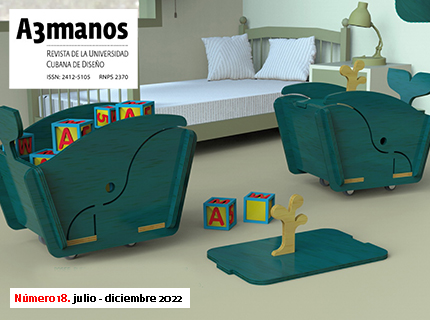Product intelligence levels.
##plugins.themes.bootstrap3.article.main##
Abstract
Maintaining and increasing the competitiveness of companies in the globalized market forces them to continuously innovate and launch new intelligent products and services. It is helpful to categorize the different levels of intelligence that can be implemented in products.
##plugins.themes.bootstrap3.article.details##

This work is licensed under a Creative Commons Attribution-NonCommercial-ShareAlike 4.0 International License.
- Attribution — You must give appropriate credit , provide a link to the license, and indicate if changes were made . You may do so in any reasonable manner, but not in any way that suggests the licensor endorses you or your use.
- NonCommercial — You may not use the material for commercial purposes .
- No additional restrictions — You may not apply legal terms or technological measures that legally restrict others from doing anything the license permits.
- ShareAlike — If you remix, transform, or build upon the material, you must distribute your contribution under the same license as the original. NOTE: This point applies to numbers 1 to 20 of the magazine with the previous CC-BY-NC-SA 4.0 license. Does not apply to the new CC BY-NC 4.0 license from Volume 11, Number. 21 (2024).
References
Alonso Monreal, C. (2001). ¿Qué es la creatividad? Madrid: Biblioteca Nueva.
Amabile T. M. (1983). The social psychology of creativity. New York: Harcourt Brace.
Altshuller G. (1984). Creativity as an exact science. Gordon & Breach.
Amabile T. M. (1998). How to kill creativity. Harvard Business Review 76, no. 5 (September-October): 76-87.
Cronin M. J. (2010). Smart Products, Smarter Services: Strategies for Embedded Control. Cambridge University Press.
Csíkszentmihályi M. (1995). Creativity: Flow and the Psychology of discovery and invention. Nueva York: Harper Collins.
De Bono E. (1994). El pensamiento creativo: el poder del pensamiento lateral para la creación de nuevas ideas. Barcelona: Paidós.
De Bono E. (1997). Seis sombreros para pensar. Barcelona: Granica.
Drucker P. (2004). La disciplina de la innovación. Harvard Business Review América Latina n.º agosto.
Fernández Romero A. (2005). Creatividad e innovación en empresas y organizaciones. Técnicas para la resolución de problemas. Madrid: Díaz de Santos
Garrell A. (2012). La competitividad y sus claves. Sabadell: FUNDIT.
Guilera L. (2011). Anatomía de la creatividad. Barcelona: Marge Books.
Guilford J. P. (1950). Creativity. American Psychologist 5: 444-54.
Guilera L., Garrell A. (2021). Productos y servicios inteligentes y sostenibles.
Barcelona. Marge Books.
Guilford J. P. (1987). Creativity research: Past, present and future. En: S. G.
Isaksen (ed.), Frontiers of creativity research: Beyond the basics. Buffalo, NY: Bearly
Ltd., 1987
McCrawT. K. (2013). Joseph Schumpeter: Innovación y destrucción creativa.
Esade Fondo. Biblioteca de gestión.
Osborn, A. (1979). Applied Imagination. Scribner.
Rebaudengo S. (2017). Design for Living with Smart Products. O'Reilly Media, Inc.
Swayamprakasam M. K. (2019). Innovative Smart Products Ecosystem. Kindle.
























